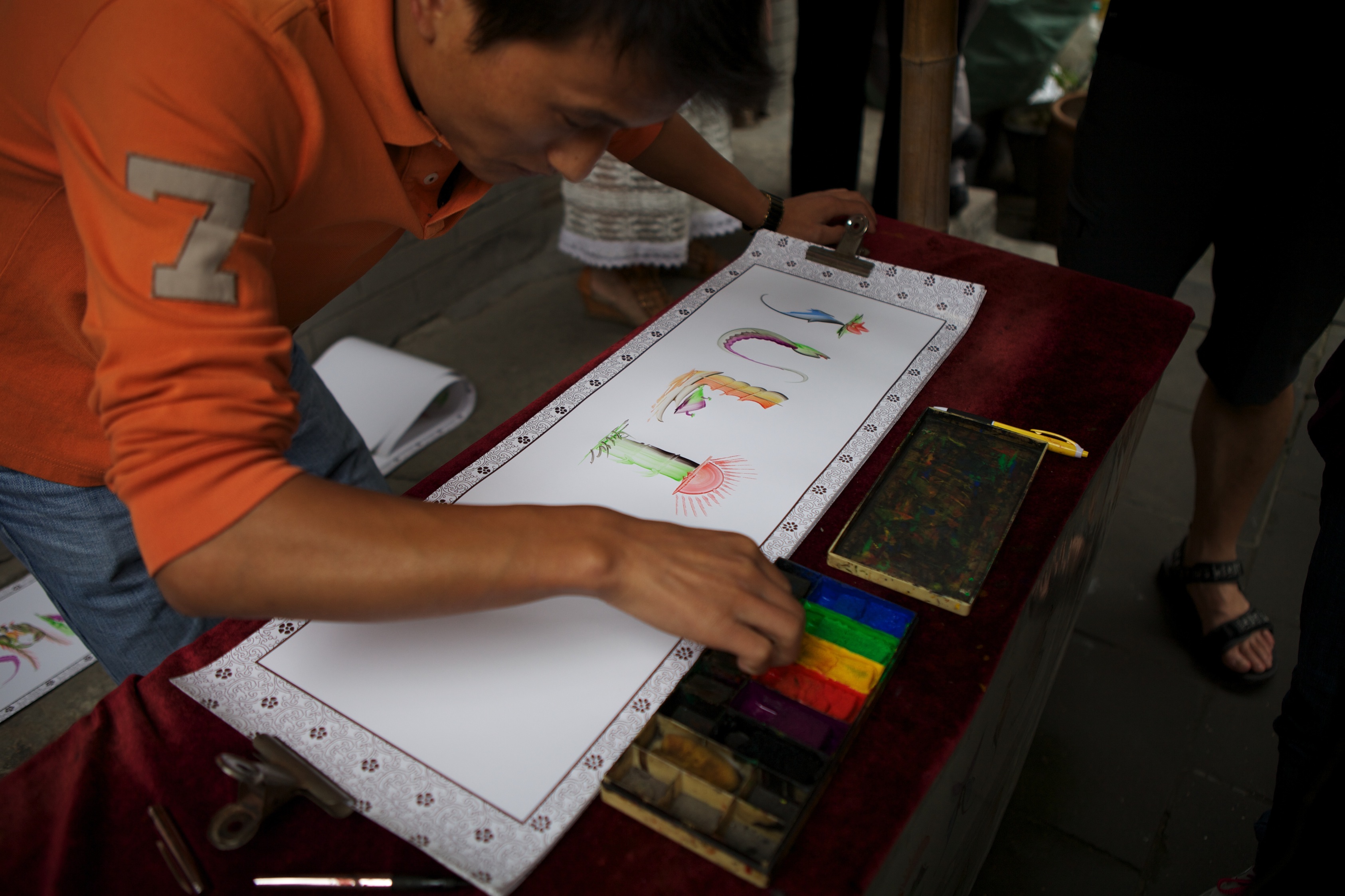AARP Eye Center
Seeing the Real Beijing: The Hutongs - the Old Fashioned Way
By Grannies on Safari, March 14, 2012 12:01 PM
For the last leg of our Trans-Siberian railway journey, we spent almost three days in Beijing. There we enjoyed seeing the city's modern architecture, soaring skyscrapers, colorful shopping districts and first-class hotels.
Towards the end of our visit, our guide reminded us that we had one more urban adventure on the agenda - a visit to Beijing's Hutong district
aboard a bicycle rickshaw. I wasn't sure what more there was to see in the city, so I looked at him with puzzlement. Alas, the guide said, you haven't really seen Beijing until you have wandered through its old, narrow neighborhoods - the Hutongs - from the perches of a rickshaw!
So off we went to an area of Beijing, near a small lake that had hundreds of colorful bicycle rickshaws parked along the water's edge. Each was decorated a little different - an expression of the driver's personality - some with vibrant colors, others with dangling beads. Sandwiched next to this quasi bicycle parking lot was a street. On one side, it was chock full of local restaurants...on the other side, it showed an endless row of the backside of dull gray, low stucco-type buildings. While the guide was busy talking to the locals, I looked around to see if this was the climax of our "adventure"...are we here to see the backsides of dull-gray Hutongs?
Our guide finished negotiating the arrangements with the rickshaw driver and motioned for me to climb aboard. I have to admit, the sight of a thin little Chinese driver watching a healthy Grannie such as myself board the rickshaw did make me wonder how this was really going to work! I wasn't quite convinced that my guy was going to be able to "tote" me around because we Americans are a little bit bigger and heavier than the normal Chinese passengers. But the driver didn't wince for a sec and patiently waited for me to climb in and off we went as if he had a magical invisible motor helping him race his cargo down the street.
The landscape quickly changed. The streets rapidly narrowed and in some cases - became an unannounced one-way street allowing one rickshaw to pass through at a time. Endless rows of the gray, stucco-type buildings lined the streets with many of the entrances housing little mom-n-pop shops with locals wheeling and dealing their food, housewares and trinkets. Front doors of the homes were decorated with Chinese symbols and intricate ethnic designs, illustrating to passerbys what the homeowners did for a living. We whizzed past the homes of merchants, carpenters, food sellers and other tradesman.
As we peddled deeper into the Hutong district, the streets narrowed again becoming more like alleys designed for a cat, not adults on rickshaws! At one point, I was convinced our rickshaw drivers had training on a NASCAR course - they were deft and quick to get us through, whizzing past horse-pulled carts and tailgating scooters all competing to navigate the narrow streets too.
I began to feel as if I had been transported onto an authentic Chinese film set. The smells, the colors, the neighborhood ambiance and street activity went from touristy to real within minutes.
Our drivers slowed down and parked the rickshaw in front of a typical Hutong home with the gray, stucco-like exterior. Our guide knocked gently on the door and soon a very old man answered and let us in. We felt as if had walked in from a black and white TV set onto a big color screen.
The man escorted us into a lovely courtyard surrounded by entrances into a group of other homes. Inside this courtyard was a small fishpond and a cage of colored finches. Decorated with pretty trees and cobblestones - the scene had an old-world charm to it and quickly became relaxing and comfortable.

In one corner of the courtyard, an artist was creating banners with colored chalks. Each banner depicted a person's name in the design of an animal or flower. The design was so cool and unique that I asked him if he would make name banners for my grandchildren. He did!
We then sat down to talk to our host, the old man, and asked him many questions about his family. He told us they had lived in this house, actually many houses in this very courtyard, for generations. He as now retired and to help make ends meet, he opened up his house to allow tourists to come in and experience his story. He wanted to be sure we learned first-hand about the, as he said, "real" Chinese culture. He offered us a local tea, similar to the green tea family, and made us feel quite cozy.
We soon left the home of the little old man in the Hutongs and peddled back into the city. The coziness and narrow walkways were soon replaced by honking horns and multi-lanes of Beijing traffic.
We later learned that the government had been destroying parts of the Hutong district to build modern buildings. The area we had visited was actually one of the last places to survive in the district.
So for those of you headed to Beijing - be sure your itinerary includes a visit to the Hutongs and its old world charm. Check out the many new restaurants and great assortment of trinkets and gift ideas. And, yes, rest assured - that if this Grannie could be peddled through its narrow alleyways - you can too!
Dreaming of a cup of tea in the Hutongs,
Granny Regina
Photos courtesy of J. Martinez.























































